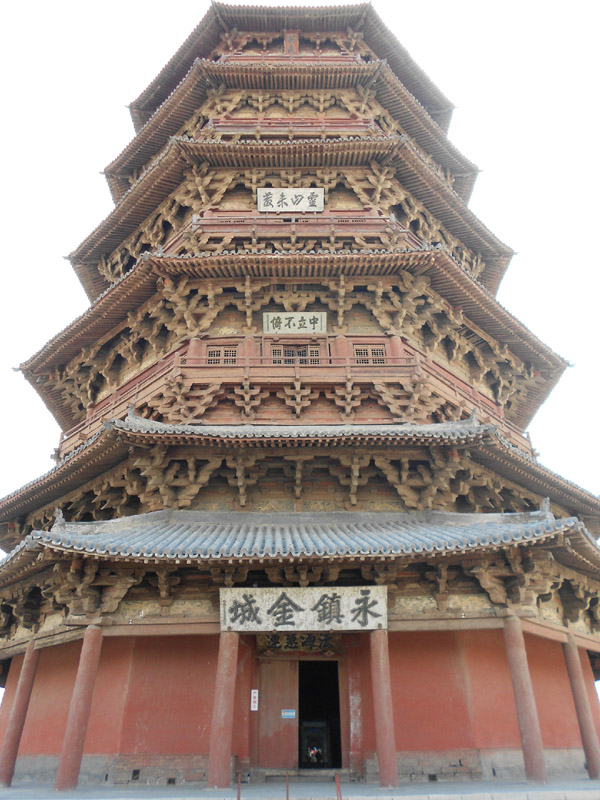
The Yingxian Wooden Pagoda, also named Sakyamuni Pagoda of Fogong Temple, is located in the Fogong Temple, Yingxian County, Shanxi province. It is regarded as one of the "Three Pagodas in the World,” together with the Eiffel Tower in France and the Leaning Tower of Pisa in Italy.
Built in 1056, this wooden pagoda has a history of over 1,000 years. It is built on a four-meter-high groundwork with a total height of 67.31 meters, and a diameter of 30.27 meters at its bottom.
The pagoda is the oldest and highest wooden structure in China and throughout the world. It is recorded that it has survived seven earthquakes, especially a great earthquake happened in the Yuan Dynasty that lasted off and on for seven days. The wooden pagoda stood firmly and remained intact after that disaster, a true testament to its rational use of components, fine construction and sound quality.
The pagoda was built on a stone platform. Around the upper edge and at the corners of the platform there are sculptures of lions whose simple and unsophisticated style belongs to the Liao Dynasty. All the statues and murals feature Liao Dynasty characteristics.
Each floor (inside or outside) have images of Buddha and relics of the pagoda. It takes a special position in the scale of architecture and art among the ancient pagodas in China today. The Buddha statue is part of the only oldest wooden pagoda. It is a true treasure for the oldest wooden pagoda in the world.
One remarkable thing is that the wooden pagoda was built without nails or rivets. All of the materials come from wood, connected by 50 types of base-mat. Each floor supported by wooden pillars inside and the outside was about 60 kinds inclined beams were tribes of short wooden columns between the wooden pillars used repeated structure consisting of a wooden beam.
The tower adopts the structure of secluded chambers in design, presenting a distinctive national characteristic inherited from the Han and Tang Dynasties while leveraging the traditional architectural techniques. It's scientific and precise in design and consummate in structure, representing the highest level of architectural art in ancient China.
We Recommend:
